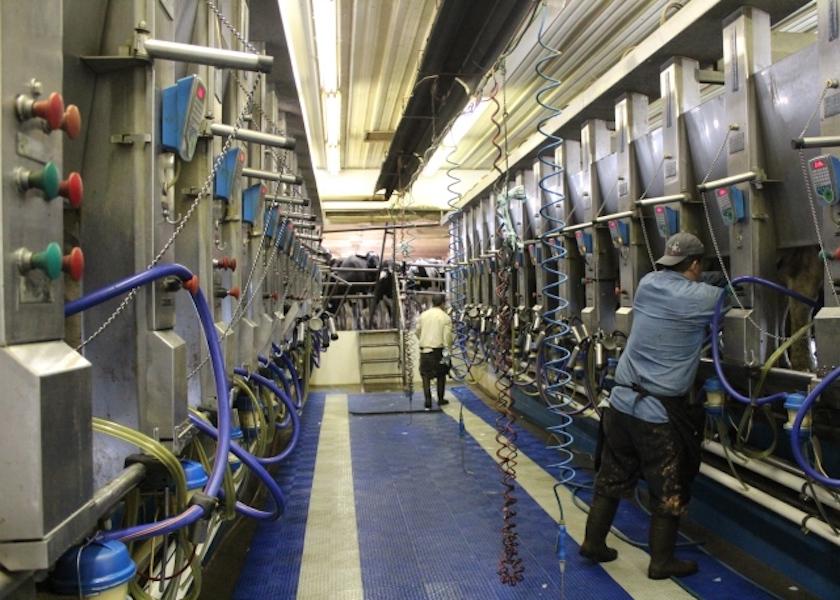What Does Your Parlor Environment Look Like?

Though cows are milked for only a mere matter of minutes each day, they spend a significant amount of time in the parlor over the course of their life. Therefore, it’s crucial that the environment of the parlor itself is an inviting, yet efficient one.
If you are building, renovating or managing a parlor, it is important to consider cleanliness, noise levels and lighting according to Emily Wilmes, an extension educator in ag production systems for the University of Minnesota.
“A parlor that runs efficiently will have a high throughput and will maximize labor usage,” Wilmes says. “Building on that, efficient labor will also lead to a calm environment for cows, which in turn stimulates milk flow and even production. Add to that the milk quality benefits of a well-run parlor, and profitability ties in to the whole system.”
When it comes down to evaluating your parlor’s conditions, Wilmes suggests assessing these three points:
Cleanliness
Cleanliness is a key part to quality milk. Thus, it’s important to make sure that the facilities where the cows are milked are as sanitary as possible, according to David Reid, owner and operator of Rocky Ridge Dairy Consulting, LLC.
“When parlors and milking facilities are kept clean, it improves the milk harvest technician’s attitudes and sends a strong message that the dairy’s management cares about adequate parlor cleanliness and sanitation,” Reid says. “By controlling the amount of dirt and other organic matter in the parlor, you can limit its access to the udder. Cleaning the parlor is not one of the more enjoyable jobs on the dairy, but it certainly is necessary.”
After each milking, take time to wash down equipment, walls and flooring to keep the parlor sanitized and organized. It may be helpful to post cleaning protocols for employees to follow before, during and after milking, and go over these protocols on a regular basis.
“A clean parlor will help manage environmental pathogens and help keep cows and milkers healthy,” Wilmes adds.
Noise Levels
A loud environment can be uncomfortable for anyone to work in, especially animals. Loud music or employees yelling could cause adrenaline to release in the cows, which prohibits proper milk letdown, according to Wilmes.
“A quiet, calm parlor will help stimulate milk letdown and reduce potential teat damage from milking machines pumping when little milk is coming out,” she adds.
Too much commotion can cause unwanted excitement and trigger stress in the parlor. To help reduce noise, the following steps should be taken:
- No shouting or yelling should occur when moving animals. Lower your voice to help keep cows calm.
- Intentionally banging on objects should be off limits. Not only can this cause stress to both animals and employees, but it can damage equipment as well.
- If the radio is on, set a maximum level that employees should not exceed. If the music is too loud, workers may not be aware of a problem that is occurring. Music can help pass the time, but it should not rise above a certain volume.
Lighting
Having a poorly lit parlor can really put a damper on quality milk production, according to Reid. When it is dark inside, it is difficult to see the cleanliness of the animal’s teats and udders. Additionally, it can become hard to check for mastitis indicators if the lighting in the parlor is dim.
“Lighting in a parlor is often overlooked, but it shouldn’t be underestimated,” Wilmes says. “A well-lit parlor benefits the cows, as they like to clearly see where they are going and what’s going on. It also benefits the employees, as they are able to the udder well and ensure its cleanliness.”
While lighting in the parlor may not seem like a big deal, it’s the small things that start to add up.
“It’s the little things, the commitment level of management and, most importantly, the commitment of the owner, that will determine the success of any milk quality plan,” Reid says. “It’s the little things that matter!”







